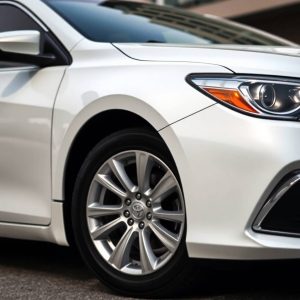
Vehicle condition refers to the current physical, mechanical, and safety state of your car — including how well it runs, how safe it is, and whether any damage exists. In auto insurance, the condition of the vehicle affects how much risk the insurer believes the vehicle represents, and therefore influences your rates, claim payouts, inspections, and coverage eligibility.
1. What “Vehicle Condition” Means to Insurers
Insurers consider both:
A. Mechanical Condition
- Brake quality
- Tire condition and tread depth
- Steering and suspension
- Engine reliability
- Airbag and safety system functionality
B. Physical / Cosmetic Condition
- Dents, scratches, and body damage
- Frame integrity
- Windshield condition
- Rust or corrosion
- Headlight and taillight functionality
Even if something is only cosmetic, insurers want documentation to avoid pre-existing damage claims.
2. Why Vehicle Condition Matters in Insurance
The condition of the car affects two major insurance calculations:
| Insurance Concern | Why the Condition Matters |
|---|---|
| Likelihood of an accident | Poor brakes, bald tires, broken lights, or alignment issues increase crash probability |
| Cost to repair or replace the vehicle | Worn or damaged vehicles may be worth less → changes claim payout values |
Because of this, vehicle condition contributes directly to risk scoring.
3. How Vehicle Condition Affects Your Premium
Here’s how insurers evaluate the condition:
| Condition Level | Insurance Impact |
|---|---|
| Excellent / Well-Maintained | Lower accident risk → stable or lower premium |
| Average / Minor Wear | No big pricing impact → normal rates |
| Poor / Mechanical Issues / Safety Problems | Can trigger underwriting flags, higher risk rating, or request for repair |
| Significant Pre-Existing Damage | Insurer may exclude that damage from claims or require inspection photos |
If the vehicle is unsafe, insurance companies can deny coverage until repaired.
4. Condition and Vehicle Value (Actual Cash Value)
Insurance does not base payout on what you paid for the car — only what it’s worth today.
Vehicle condition influences actual cash value (ACV):
Example:
Two 2017 Toyota Camrys:
| Condition | Market Value (Approx.) |
|---|---|
| Clean, maintained | $13,500 |
| Dents, worn interior, fading paint | $10,500 |
| Frame damage or rust | $7,500 |
Because lower-value vehicles cost less to replace, poor condition may decrease comprehensive/collision premiums — but it also means lower claim payouts.
5. Insurers Often Request Photos to Document Condition
Photos prevent:
- Claiming old damage as new
- Inflated accident repair claims
- Value disputes
They also allow the insurer to exclude damage that already existed.
6. Condition Matters Most in These Coverage Types
| Coverage Type | Impact of Condition |
|---|---|
| Collision | Determines repair cost vs total loss calculation |
| Comprehensive | Higher-value vehicles = higher payouts = higher cost |
| Liability | Condition affects likelihood of causing an accident |
| Gap Insurance | Condition does not matter — tied to loan balance |
7. When Condition Can Get You Dropped
A vehicle may be refused or marked high-risk if:
- It has airbags missing or deployed
- The frame is rusted or compromised
- Tires are severely worn
- Safety systems don’t function
Insurers do not want to cover a car that is more likely to cause a claim.
8. In Short
| Key Point | Why It Matters |
|---|---|
| Condition affects accident risk | Unsafe cars are more likely to cause claims |
| Condition affects payouts | Poor condition = lower value = smaller claim check |
| Insurers document pre-existing damage | Prevents fraud and disputes |
| Mechanical safety issues can block coverage | Liability risk increases significantly |
